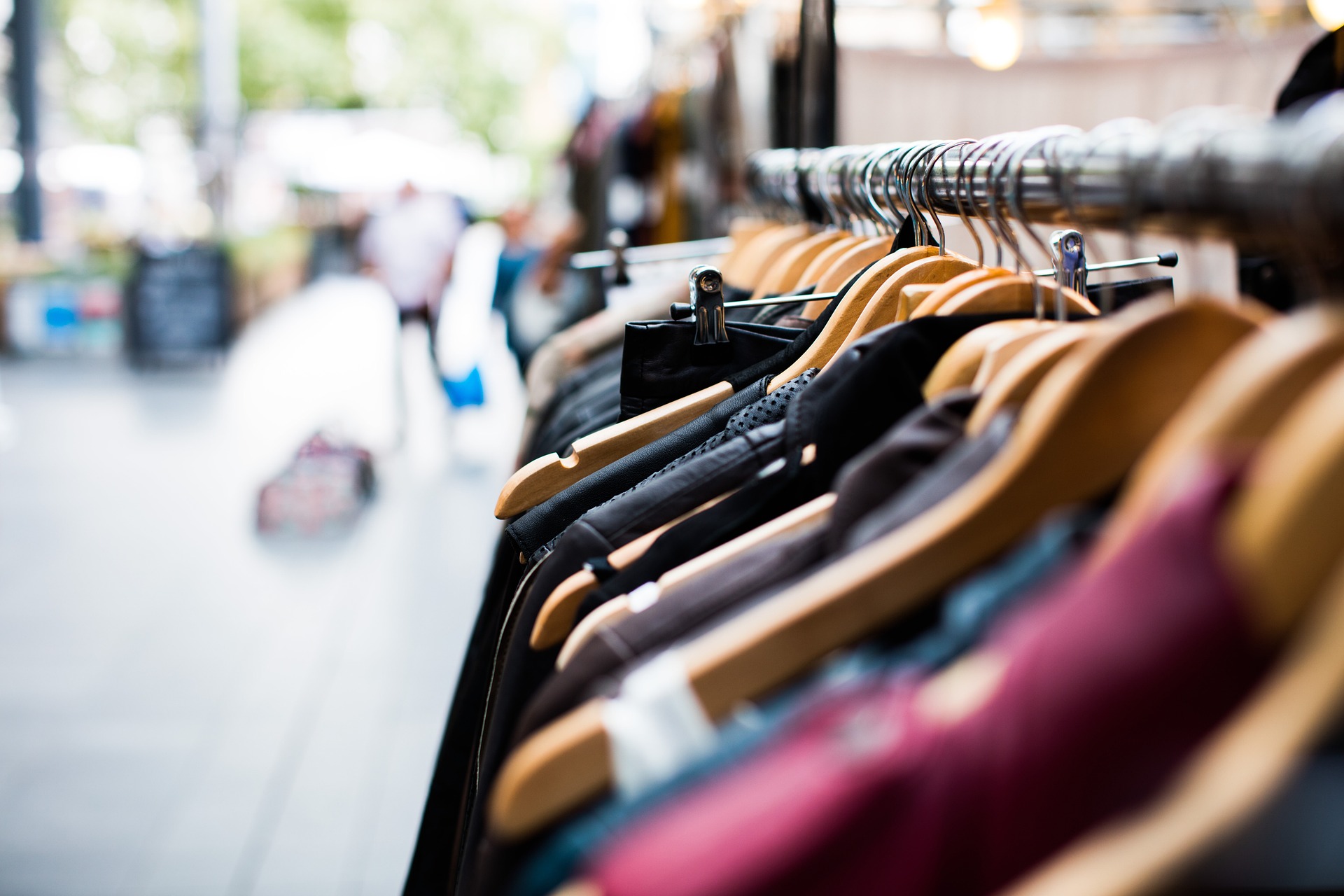The past 12-months have been transformative and challenging for the sector, with retailers experimenting with new technologies and strategies whilst grappling with an uncertain macro-economic environment, rising inflation, and a deepening cost-of-living crisis.
In 2023, brands explored the use of augmented reality, targeted customers with increased personalisation and thought about how they could utilise artificial intelligence (AI). Meanwhile, consumers started to feel the effects of rising prices making retailers fight harder for their loyalty.
To mark the end of 2023, the editorial team at Retail Systems has rounded up a host of industry experts to tell us their top retail predictions for the year ahead.
Shoppable advertising
As consumers continue to spend an increasing amount of time on social media, shoppable ads allow customers to learn about and purchase products through adverts. Unlike traditional advertising which redirects users to a brand’s website, shoppable ads mean people can complete their purchase without leaving the social media app.
According to a report by marketing firm Acxiom, shoppable ads are part of a move to social commerce, where digital media platforms blur the lines between social and commercial features to keep users within their platforms, increase engagement and ultimately boost revenues.
Abi Acland, senior consultant, data strategy, eCRM and web personalisation at Acxiom adds: “63 per cent of consumers who have used shoppable ads enable them to buy products and services more efficiently. Sales through social platforms are expected to reach $7 billion in the UK by 2026.”
The end of free returns
Online shopping has increased the amount of goods that customers buy online, yet the amount of returns has also steadily risen. Many retailers such as Zara, Boohoo and H&M are refusing to shoulder the cost and making customers come into stores to return unsuitable items or foot the bill of returns themselves.
Scott Logie, chair of the customer engagement committee for the UK Data and Marketing Association, and chief commercial officer at independent UK consultancy Sagacity, predicts more retailers will charge for returns to recoup rising operational costs and tackle sustainability issues.
“In 2024, battle lines will be drawn over free returns, putting an end to the buy-and-bail habits of serial shoppers,” Logie says. “Retailers must decide on a strategy – whether that’s ending the free ride for everyone, or taking it as a chance to build loyalty by rewarding valuable customers with free shipping and returns.”
He adds: “It’s a tough line to walk, as retailers need to recoup rising operational costs and tackle sustainability issues, but equally won’t want to lose customers who already have less cash to splash. Making an informed decision will require retailers joining the dots between customer information and returns history to understand how common returns actually are, which demographics are most likely to return, and how to tactically set up a returns policy that improves the bottom line.”
Rob Shaw, SVP and GM EMEA at Fluent Commerce, calls returns the “Achillies’ heel” of retail and said companies would take action to reduce the cost and environmental waste.
“In the year ahead, the reverse logistics workflow will start to become more efficient,” Shaw said. “We should expect to see more drop-off points where consumers can hand products back, making the returns process easier,” Shaw says.
“Other retailers will start using returns policies as a way of rewarding good customers. For example, customers that return their order promptly in good condition may receive extra loyalty points. Technology will become increasingly valuable to analysing returns patterns, allowing retailers to identify key perpetrators and loyal customers and act accordingly,” he adds.
Loyalty as currency
With the threat of recession looming – or already being here, depending on who you ask – retailers need to work harder than ever to retain customers as they pick and choose with whom they spend their money.
Lars Rensing, chief executive at technology firm Protokol says that Web3 will play a part in providing value for customers.
He notes: “The technology can be used as the backbone for new loyalty systems. Loyalty ‘points’ would be ditched in favour of loyalty tokens. Loyalty tokens are more versatile, they can offer users specific product discounts, ways to display their top shopper status online, or unlock early access to new products, just as easily as they can be a store of points to be exchanged for money off a purchase.
“Such a system will also help secure revenue for businesses by building a more clear image of who their customers are and where they interact with the brand. Potential sponsors can be reassured by the immutable, transparent nature of blockchain-backed loyalty programs that the audience size they intend to reach, and the level of engagement they wish to see, are real and not the result of double-counting across platforms.”
Barry Stearn, VP – global program owner at FreedomPay predicts that loyalty will be integrated into payment systems.
“In 2024, shoppers are looking for next-level personalisation, and expect loyalty points and personalised rewards to be fully integrated in their payment method of choice,” he says. “Taking this one step further, they would also like to see loyalty points accrued from both instore and online purchases joined up in one account.
“Loyalty is becoming a currency in itself. Businesses are adapting to ever-evolving customer preferences, with payments technology supporting customisation and seamless experiences at checkout.”
Back to brick-and-mortar
While the pandemic saw huge numbers of customers turning to online shopping, there are signs that the tide is turning and shoppers are being enticed back to stores in the real world.
Brandon Black, vice president and general manager at supply chain firm Ivanti Wavelink, says that there has been a “boomerang effect” leading retailers to invest in their shops.
“Many retailers will be keen to balance between operating online and in-person stores – for example, M&S have announced they’ve already invested £80 million, in to “sustainable brick-and-mortar retail” with the aim of becoming the UK’s leading omnichannel retailer,” Black says.
“Warehouses will play a key role in supporting this blended retail model. Inventory management and logistics will be optimised using AI and automation to enable faster fulfilment across channels. We’ll see the collaboration between device manufacturers and software providers, where intelligent hardware will play a more integral role in optimising workflows and providing better visibility across omnichannel operations, with things like IIoT (industrial internet of things) being implemented on a large scale,” Black adds.
Rosemary DeAragon, global retail and CPG industry GTM lead at data company Snowflake says that smaller players are well placed to take advantage of this shift.
“While there has been a rapid rise and interest in retail media networks, 2023 has made it clear that the big ones will thrive while others are struggling to gain traction with large CPG (consumer packaged goods) brands,” DeAragon notes.
“While companies may not be able to compete with Amazon or Walmart’s media networks, they do have a monopoly on the in-store experience. Small and medium retailers have shoppers inside their four walls and this is a space where they can win.”
New instore technology
Sharat Potharaju, chief executive and co-founder of software company Beaconstac, predicts that QR codes and smart barcodes will change the way consumers shop in store.
"2D barcodes will help retail brands redefine product engagement in 2024, as nearly 90% of consumers use their phones to research products while shopping in-store,” he says. “With a simple scan, QR code labels on packaging link consumers to relevant product information, like manufacturing dates, organic certifications or ingredient lists.
“If a customer wants to learn more about how a product works, QR codes can also connect them to how-to videos. This added value content empowers consumers to make faster, smarter purchasing decisions. QR codes can also offer coupons and discounts to in-store shoppers, enhancing consumer engagement through a physical and digital interaction,” Potharaju adds.
Henrik Hansen, retail specialist, display at Samsung says that stores have been used to create unique experiences and this has helped drive customers back to stores.
“As brands battle to stand out from a sea of sameness, physical stores should be treated as an extension of their online presence. They can add a layer of personality and provide customers with more personalised information and memorable experiences,” he says.
“53 per cent of shoppers base their initial perception of a store on its exterior, so it’s important that brands make a good first impression,” he concludes.
The end of greenwashing
In 2023, the EU and the UK announced their respective anti-greenwashing legislation, which will tackle misleading claims from businesses about the environmental benefits of their products, services, or operations.
Iona Silverman, intellectual property and media partner at national law firm Freeths, predicts this will have a more pronounced effect in 2024. “For me, the big retail trend is the tension between greenwashing and greenhushing. Everyone wants to shout about their eco credentials but the regulators are really clamping down in this area, meaning some brands are cautious to talk about their sustainability story at all. There is a balance to be struck (and we can help brands shout about their sustainability creds while mitigating risk of greenwashing).”
Josh Pitman, managing director of packaging company Priory Direct estimates that the ecommerce market will continue to grow until 2028 meaning that sustainability is more important than ever.
“The increase to the Plastic Packaging Tax from 1 April 2024 gives retailers a financial incentive to review their packaging choices, but retailers also risk losing customers if they don’t focus on their sustainability credentials. Logistics and packaging choices are important here,” he says.
Pitman adds that retailers were embracing the circular economy, with clothing retailer Lucy and Yak offering discounts if they purchased dungarees on Vinted. Other stores are offering refurbished products or free repairs.
“The fashion and ecommerce-based circular economy is really gaining momentum and will be an ongoing flourishing trend in 2024. Previously associated with shoppers being thrifty in charity shops, large brands are introducing second-hand clothing ranges and running initiatives that encourage circular buying habits.
Latest News
-
Currys upgrades payment technology to enable AI-powered shopping experiences
-
Waitrose pledges new ‘market leading’ welfare standards for charcuterie
-
Ocado ends tech exclusivity agreement in ‘most markets’
-
Asda announces new group CIO
-
What’s next for retail in 2026?
-
The most read Retail Systems stories of 2025
Beyond Channels: Redefining retail with Unified Commerce
This Retail Systems fireside chat with Nikki Baird, Vice President, Strategy & Product at Aptos will explore how unified commerce strategies enable retailers to tear down these barriers and unlock new levels of operational agility and customer satisfaction.
The future of self-checkout: Building a system that works for consumers and retailers
In this webinar, industry leaders discussed what the future of self-checkout looks like and how retailers can make the technology work for everyone.
© 2024 Perspective Publishing Privacy & Cookies










Recent Stories